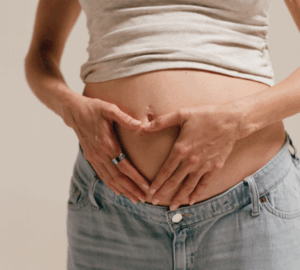Dr. Carrie Jones is an internationally recognized speaker, consultant, and educator on the topic of women’s health and hormones. She is currently the medical director for the Dutch Test, a series of hormone tests that can empower individuals with key insights into their health when struggling with fertility, PCOS, menopause, fatigue, insomnia, andropause, hair loss, and more.
Dr. Carrie uses Oura to monitor changes in her menstrual cycle and hopes that sharing her insights can help others spot the impact of hormones on their bodies.
LEARN MORE: How Your Menstrual Cycle Impacts Your Entire Body
What led you to Oura Ring?
“I spend a lot of time connecting with practitioners all over the world about their client’s health and how they are working to optimize them. Many times that includes an Oura Ring because practitioners need as many tools in their tool kit as possible. You need those in-depth health snapshots like hormone panels or office visits but you also benefit from having that long-term data with Oura. How are they sleeping? What is their temperature doing? Are we seeing patterns over months and months? Now we don’t have to rely on patient recall.
I finally got an Oura Ring because I was having FOMO – at conferences, everyone was sharing their data and the tricks they were using.”
What have you learned from using Oura?
1. Cycles Can Still Surprise You
The hormones estrogen and progesterone are major drivers of temperature changes during the menstrual cycle. Estrogen drives cooler temperatures in the first half of the cycle (follicular phase) while a rise in estrogen and progesterone is associated with increases in temperature in the second half (luteal phase). Learn more here.
Even though Dr. Carrie is a hormone expert, she notes some surprising findings that Oura helped her realize:
“During the start of the pandemic I was paying close attention to my Oura markers ‘just in case,’ and, naturally, I freaked out over a temperature spike one morning. Turns out I had ovulated. Your body produces progesterone after an egg is released and that progesterone has a warming effect on the body. My body was doing a natural biological thing but, given the situation, my logic left the building and I assumed the worst.
When I shared this on social platforms, so many women reached out to say they had experienced the same thing. It’s a reminder that we should talk more openly about these patterns.”
2. Some Cycles Have Weaker Ovulations
“Many people don’t realize that you can have a cycle where your body skips ovulation – an ‘anovulatory cycle’ or a cycle where ovulation simply isn’t as strong. I can spot that in my data because I get low or no temperature spikes in my luteal phase. I also find my sleep is worse and I get worse PMS and a migraine with weaker ovulations.”
When Dr. Carrie sees this pattern, it sends up a red flag: “If I see this pattern in my data…I’m asking myself if stress or poor sleep is disrupting my cycle. If I’m talking with someone else, I’ll also ask them about their nutrition, their travel plans, or if they’ve been taking a new medication around ovulation like a high-dose anti-inflammatory. Oftentimes we don’t realize what’s disrupting our cycles until we start looking for patterns.”
She can feel the difference between cycles too: “I call progesterone the ‘calming, soothing, everything is going to be okay’ hormone. Without it, I feel more stressed and don’t sleep nearly as well in the days leading up to my cycle.”
3. Cycle Length May Indicate Stress
“My cycle happens to be very regular but we’re working with people all the time who don’t have that regularity. For example, someone with PCOS can be dealing with irregular cycle lengths, disrupted ovulation, or fertility issues and not realize it if they’re not able to see their patterns month after month. Even for me, it was a wake-up call when I look back at the start of the pandemic and see that my cycle length changed from May to June when I was incredibly stressed out. For me, that was another sign that I needed to pay attention to what my body needed.”
What’s your advice for other female Oura Members?
Honor your circadian rhythm.
“We have genes in our brains, called clock genes and they are set and reset by lightness and darkness. Note – I didn’t say intermittent fasting, ashwagandha, ketosis, or something new and crazy! I said light and dark. Get full spectrum light in the morning and sleep in the dark. This pattern teaches all of your clocks what the ‘right’ rhythm is, including the clocks in your ovaries and reproductive system. It’s free, cheap, and easy and it helps establish that rhythm to your menstrual cycle.”
RELATED: How to Use Oura Temperature Trends to Track Your Cycle










